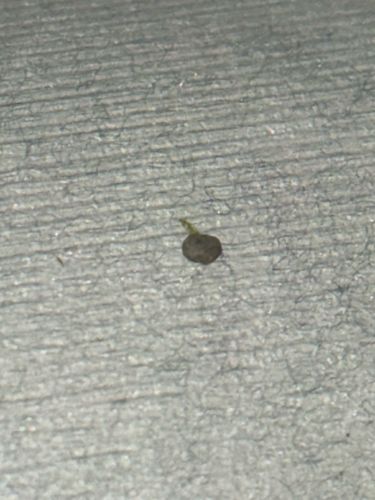Case-bearing Clothes Moth
Scientific Name: Tinea pellionella
Order & Family: Lepidoptera, Tineidae
Size: Adult moths have a wingspan of approximately 10-14 mm (0.4-0.6 inches). Larvae range from about 1 mm when newly hatched to 10-12 mm (0.4-0.5 inches) when fully grown, with their case adding slightly to their apparent size.

Natural Habitat
These moths are typically found in dark, undisturbed areas where natural fibers are stored. This includes closets, attics, storage chests, drawers, under furniture, and in areas with infrequently moved carpets or rugs. They prefer environments with moderate temperatures and humidity.
Diet & Feeding
The larvae of case-bearing clothes moths feed primarily on natural fibers of animal origin, particularly keratin-containing materials. This includes wool, silk, animal hair (including pet hair and fur), feathers, felt, and sometimes blends containing these materials. They are known to infest carpets, clothing, upholstery, taxidermy, and stored animal products. Unlike many other insect pests, they do not require water and can obtain all necessary moisture from the materials they consume.
Behavior Patterns
Case-bearing clothes moths are known for their larvae, which construct and live within a portable silken case. This case is typically covered with debris, fibers from their food source, or even their own frass, providing camouflage. The larva drags this case wherever it goes. Adults are typically poor fliers and prefer to crawl or make short hops. They are most active in low light conditions or at night and are attracted to light, though less strongly than some other moth species. The larval stage is the damaging stage, as they feed on natural fibers. The life cycle can take anywhere from two months to two years, depending on environmental conditions and availability of food.
Risks & Benefits
Potential Risks: The primary risk associated with case-bearing clothes moths is economic damage to natural fiber goods. Their larvae can cause significant destruction to clothing, carpets, tapestries, upholstered furniture, and other items made of wool, silk, fur, or feathers. This damage can range from small holes to large areas of fabric loss. They are not known to bite or transmit diseases to humans. Potential Benefits: In their natural outdoor habitat, these moths (or related species) might contribute to the decomposition of animal remains and natural fibers, playing a minor role in nutrient cycling. However, in human dwellings, they are almost exclusively considered a pest.
Identified on: 9/1/2025